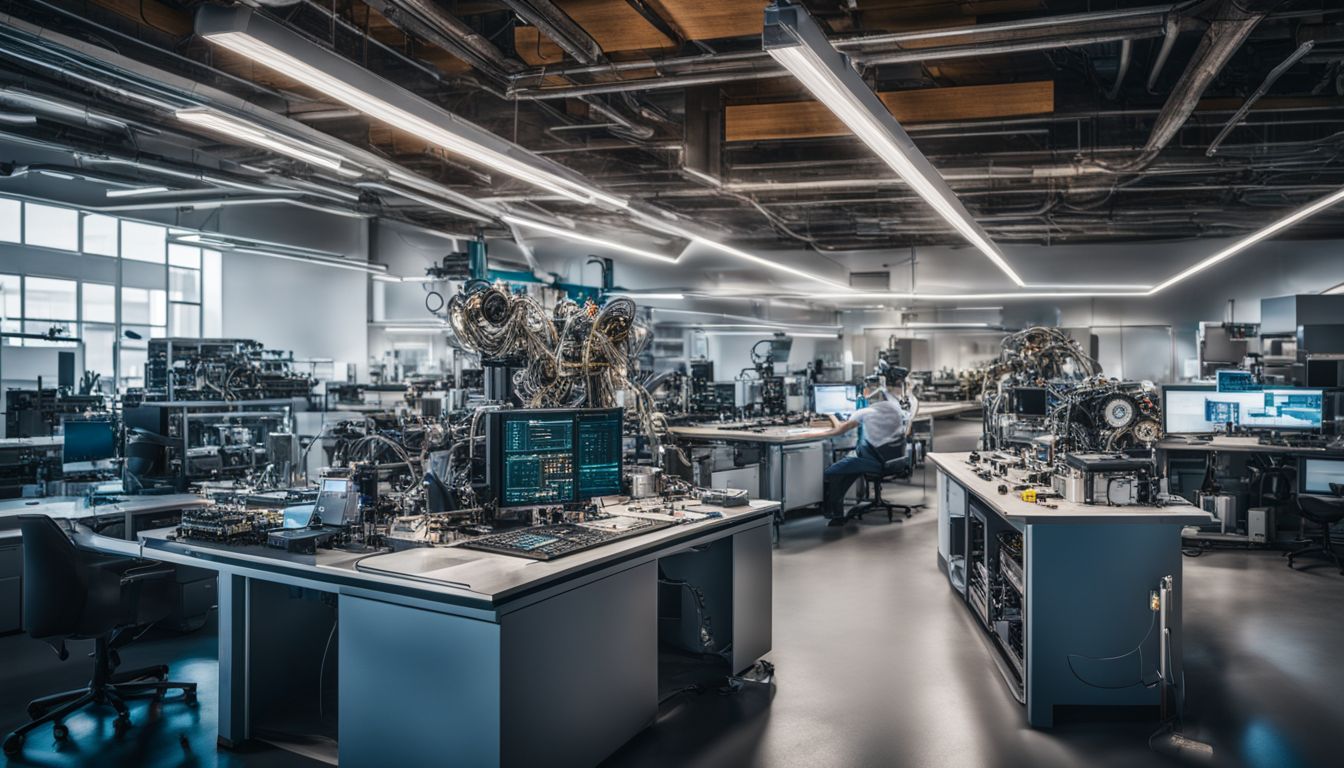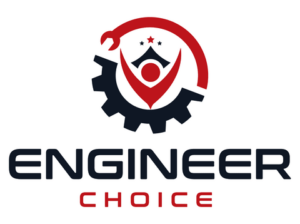
If you’re feeling overwhelmed by the rapid changes in engineering, you’re not alone. One exciting update is that model-based systems engineering is a big trend this year.
Our article will guide you through the latest trends, such as agile and human-centered design, to better understand and apply these concepts.
Automation and AI are reshaping systems engineering, with their advantages being explored in the industry. Technology such as in materials and manufacturing, modeling and simulation, and autonomy and artificial intelligence, are also shaping the future of systems engineering.
Stay tuned for an enlightening journey!
Key Takeaways
- Systems engineering is now using model – based approaches, combining systems and software engineering for better products. This method improves design and makes complex systems work smoothly together.
- Agile methods in systems engineering focus on being able to change quickly. This means projects can adapt easily and deliver updates faster, making things more efficient.
- Human factors are key in making sure systems meet user needs. Designing with people in mind helps create more intuitive and effective solutions.
- Cloud technology is becoming important because it lets engineers use resources better and save money. It also works well with agile methods, making system updates smoother.
- Security is a big part of building safe systems from the start. Engineers are focusing on catching risks early to keep data protected.
Model-Based Systems Engineering

Model-Based Systems Engineering integrates systems and software engineering, fostering increased collaboration and communication. It streamlines the design process, ensuring efficiency and accuracy in system development.
Integration of systems and software engineering
Systems and software engineering are now joining forces. This trend makes the design and operation of complex systems more efficient. By combining these fields, engineers can create solutions that are both powerful and practical.
They use the best from both worlds to solve problems faster.
This teamwork means you get better products and services. Think about how your phone updates without glitches; that’s systems and software engineering working together. Industrial engineering also benefits as factories become smarter with integrated systems.
It’s all about making things work better together, from apps to airplanes.
Increased collaboration and communication
Merging systems and software engineering paves the way for better teamwork and sharing of ideas. Teams now work more closely than ever, breaking down barriers between different engineering disciplines.
This approach encourages everyone to contribute their expertise, leading to richer discussions and more innovative solutions.
New tools make it easier for teams to stay connected, share updates, and solve problems together. They can chat, video call, or collaborate on documents in real time. This constant flow of communication keeps projects moving smoothly and allows for quick adjustments when needed.
By working together this way, engineers can tackle complex challenges more effectively.
Agile Systems Engineering

Emphasize adaptability and flexibility in development and delivery processes.
Incorporate continuous development practices for efficient outcomes.
Emphasis on adaptability and flexibility
In agile systems engineering, being flexible and able to adapt is key. This approach lets you change your plans quickly when new information comes up. You won’t waste time on outdated methods.
Instead, you focus on what works now.
This trend also means delivering updates and improvements continuously. Teams work in short cycles, making it easier to adjust along the way. This keeps projects moving forward without big delays or problems.
Continuous development and delivery
Agile systems engineering emphasizes adaptability and flexibility, allowing for continuous development and delivery. This approach enables frequent iterations and updates to address evolving requirements and feedback, promoting a more responsive and efficient development process.
By integrating DevOps practices, organizations can streamline the delivery of high-quality software, enhancing collaboration between development and operations teams.
Cloud-native infrastructure plays a crucial role in enabling continuous development and delivery by providing scalable computing resources on-demand. The integration of cloud-based solutions with agile practices facilitates rapid deployment of system updates, ensuring seamless delivery while optimizing costs.
Systems of Systems Engineering
Dealing with complex and interconnected systems requires a holistic approach to problem-solving, incorporating multiple layers of interactions. This field emphasizes understanding the interdependence and emergent behaviors of various systems working together.
Dealing with complex and interconnected systems
When tackling complex and interconnected systems, it’s essential to take a holistic approach. This involves considering how individual components interact within the larger system, addressing potential dependencies and interdependencies.
Understanding these connections is crucial in ensuring that the overall system functions seamlessly and efficiently. It also allows for better problem-solving when issues arise, as you can analyze the impact across the entire interconnected system.
The growing emphasis on dealing with complex and interconnected systems reinforces the need for comprehensive problem-solving strategies within systems engineering education. As students, grasping this concept will be key to navigating future challenges in this evolving field.
Holistic approach to problem-solving
Dealing with complex and interconnected systems opens the door to a holistic approach to problem-solving. It means considering the entire system as a whole, rather than focusing on individual parts in isolation.
This approach involves understanding how different elements within the system interact and affect one another, allowing for more effective problem identification and resolution.
Human factors are integrated into this approach, ensuring that solutions consider user experience, efficiency, and safety. Furthermore, it addresses security measures throughout the development process to mitigate vulnerabilities in systems.
Human Systems Engineering
Design systems with human factors in mind, which enhances user experience and efficiency. Understanding how people interact with technology is crucial for developing successful systems.
Designing systems with human factors in mind
Systems engineering now emphasizes designing systems with human factors in mind, ensuring an improved user experience and efficiency. It’s vital to consider the end-user perspective during system development, leading to more intuitive designs and smoother operations.
By integrating human-centric elements from the outset, systems can better meet user needs and optimize overall performance, aligning with a growing emphasis on usability and accessibility in the field of systems engineering.
Understanding human behavior is crucial for creating effective systems; it drives a shift toward more user-friendly designs that cater to diverse users’ needs. Integrating human factors into system design fosters efficiency and enhances overall usability while considering varying user capabilities.
Improved user experience and efficiency
Systems engineering continues to prioritize the improvement of user experience and efficiency, recognizing the significance of designing systems with human factors in mind. By integrating human systems engineering principles, such as ergonomics and user-centered design, systems are being tailored to meet the needs and preferences of users, ultimately enhancing their overall experience.
Advancements in AI and automation are also contributing to improved efficiency in systems engineering processes. Implementation of machine learning and predictive analytics enables better decision-making, leading to streamlined operations and more effective resource utilization.
As a student looking into the field of systems engineering, staying abreast of these trends will provide you with valuable insights into shaping future technologies that prioritize user experience and operational efficiency.
Evolution of Systems Engineering Education
Systems engineering education evolves to incorporate new technologies and methodologies. Students are being prepared for the constantly changing field of systems engineering.
Incorporating new technologies and methodologies
The field of systems engineering is rapidly evolving, driven by the incorporation of new technologies and methodologies. From model-based systems engineering to AI and automation advancements, students are preparing for a dynamic landscape where adaptability and innovation are crucial.
The integration of DevOps and agile practices in cloud-native infrastructure further emphasizes the need for modern approaches that align with industry demands. As you delve into your education, staying abreast of these technological shifts will equip you for a future in systems engineering that is continuously shaped by innovation.
Moving forward to “Rise of Cloud-Native Infrastructure”, let’s explore how this trend is reshaping the world of systems engineering.
Preparing students for the evolving field
Systems engineering education is evolving to incorporate new technologies and methodologies, ensuring students are equipped for the changing landscape. Students will be immersed in model-based systems engineering and agile practices, emphasizing adaptability and collaboration.
The focus on security measures throughout the development process will also prepare students to address vulnerabilities in systems. Additionally, advancements in AI and automation will equip students with the skills needed to improve efficiency and accuracy in systems engineering processes.
The rise of cloud-native infrastructure presents opportunities for students to explore scalable solutions while integrating DevOps and agile practices. These trends align with the industry’s demand for professionals well-versed in interdisciplinary fields, positioning students as future-ready engineers poised to tackle complex challenges.
Rise of Cloud-Native Infrastructure
Engineering now gravitates towards cloud-based solutions due to their scalability and cost-efficiency. Systems engineering incorporates DevOps and agile practices for seamless integration with cloud-native infrastructure.
Utilizing cloud-based solutions for greater scalability and cost-efficiency
Embrace the use of cloud-based solutions for systems engineering, providing greater scalability and cost-efficiency. Cloud technology allows for easy adjustment to changing workloads and demands, optimizing resources to match specific needs.
Incorporate DevOps and agile practices with cloud-native infrastructure, enabling continuous integration and delivery. This integration fosters efficient collaboration between development and operations teams while ensuring rapid deployment of new system features.
Integration of DevOps and agile practices
Integrating DevOps and agile practices aims to streamline the collaboration between development and operations teams, promoting a seamless software delivery process. This integration emphasizes continuous integration, deployment, and delivery, allowing for faster iterations and enhanced responsiveness to changing requirements.
By adopting these practices, you’ll gain valuable insights into improving software quality, reducing time-to-market, and enhancing overall efficiency in systems engineering.
– Increased Focus on Security
Increased Focus on Security
Systems engineering now heavily focuses on integrating security measures throughout the development process, ensuring robust protection against potential threats. Vulnerabilities in systems are being addressed with increased vigilance and proactive strategies for enhanced security.
Incorporating security measures throughout the development process
Developing systems with built-in security from the start is crucial. Address vulnerabilities right from the initial planning stages to ensure robust protection. By integrating security measures throughout, you can safeguard against potential threats and breaches.
Emphasizing security early on will lead to more resilient and secure systems.
Don’t overlook security as an afterthought in your development process. Start by implementing best practices for secure coding and design principles to fortify your system’s defenses.
Addressing vulnerabilities in systems
Developing systems with security in mind is crucial for safeguarding against potential vulnerabilities. Incorporating security measures at every stage of the development process enhances overall system resilience.
Stay updated with latest cybersecurity practices and tools to protect systems from evolving threats.
Security breaches can have far-reaching consequences, impacting not only the system but also its users. Understanding potential weak points within a system helps in proactively addressing vulnerabilities.
Advancements in AI and Automation
AI and automation make systems engineering processes more efficient. They implement machine learning for better decision-making.
Improving efficiency and accuracy in systems engineering processes
Embrace advancements in AI and automation to boost efficiency. Utilize machine learning for smarter decision-making. Incorporate predictive analytics for enhanced accuracy. Integrate security measures throughout the development process to address vulnerabilities early on.
Prepare for an evolving field by incorporating new technologies and methodologies into your education. Emphasize adaptability, flexibility, and continuous development for improved system engineering processes.
Implementation of machine learning and predictive analytics for better decision-making.
Explore machine learning’s power in predicting and optimizing systems, aiding better decision-making. Leverage predictive analytics to foresee potential issues, enhance efficiency, and make informed choices.
Embrace the role of AI in improving accuracy and effectiveness across systems engineering processes. Gain a competitive edge by integrating these advancements into your skill set for future success in the field.
Integrate machine learning and predictive analytics to improve system efficiency and informed decision-making. Embrace the emerging trends of AI and automation to stay ahead in the ever-evolving field of systems engineering.
Conclusion
Explore the practical trends in systems engineering for enhanced adaptability and efficiency. Witness the impact of integrating human factors, agile methodologies, and advanced technologies.
Your journey to excellence awaits with these strategies at your disposal. Embrace the evolving field of systems engineering and pave the way for transformative advancements. Take charge and lead innovation in this dynamic landscape!
FAQs
1. What is systems engineering?
Systems engineering is a way to make complex systems by working on the whole project, not just parts of it.
2. Are more people using computers in systems engineering now?
Yes, the use of computers and software tools in systems engineering has grown a lot.
3. Is teamwork important in systems engineering today?
Yes, teamwork is very important because it helps solve big problems together.
4. Are there new ways to test systems before they are built?
Yes, engineers now use virtual reality and simulations to test systems early on.
5. How does sustainability fit into modern systems engineering?
Sustainability is key; engineers work hard to make sure their projects are good for the environment.

